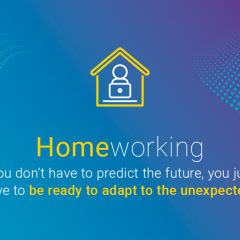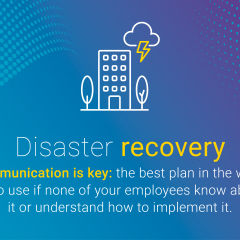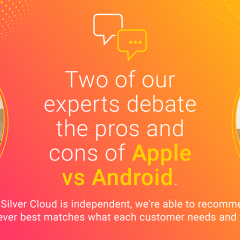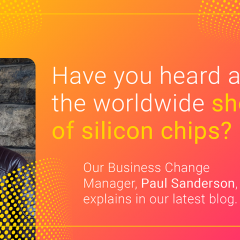BT will switch off part of the network: are you ready?
Maybe you’ve heard that in 2025, BT will stop using some parts of its network of phone lines. If you haven’t, you’re not alone – seemingly only about half of all UK businesses are aware, and far fewer are prepared.
One of the ways that we help our customers is to make sure that they always know about any developments in the tech and communications world. If there’s a threat, they know about it in plenty of time. If there’s an opportunity, they can move first to get a competitive advantage. Here’s what we’re telling them about the BT switch-off.
What is BT closing down?
BT is switching off two types of lines. One is the PSTN (‘Public Switched Telephone Network’). This is made of copper wires that can carry phone calls and send faxes. It’s fundamentally the same technology that was used when the telephone was invented in the 19th century.
The other is the ISDN (Integrated Services Digital Network). It also runs on copper wires, and can carry voice, video, data and so on. But it’s now out of date: its maximum speed is 128kbps. Twenty years ago that was the best you could get, but these days much faster technologies are widely available. And, of course, our needs and expectations have changed too: at 128kbps it might take ten minutes to download a good quality image file, and an HD movie would take several days!
When is it happening?
The process is happening in stages. From September 2023, BT will stop selling PSTN or ISDN services, so if you have a system that uses either of those networks, you won’t be able to add lines to it. Between April and December 2025, anyone still using the old networks will have to change to a different one.
We should point out that BT have changed some of these dates before, so they might possibly change them again.
Will I have to change my phone or fax system?
If either of them is an older system – yes. Exactly what changes you’ll have to make depends on exactly what you’re currently using and how.
What is the new way of carrying voice calls?
The modern way of carrying voice and data is over the internet. You might have seen some of the technical terms for this, like ‘SIP’ (Session Initiation Protocol), ‘VoIP’ (Voice over Internet Protocol) or ‘cloud-based telephony’.
Using the internet has several advantages. It’s cheaper, because you don’t have to pay for landlines. It’s much more flexible: you don’t have to be physically plugged into an old-style phone socket, so you can make calls anywhere that you can get an internet connection. Provided your internet connection is fast enough, it opens up all sorts of other modern features too. And the 5G rollout means that lots of people will get faster connections soon, including in places which have traditionally struggled.
When I move to a VoIP provider, what are the options?
Anyone looking for a VoIP business phone system is spoilt for choice these days: there are dozens of VoIP providers, all with different qualities of connection and levels of service. Because Silver Cloud is independent, we can choose from the whole market; and because we’re telecoms experts, we’ll find the option that’s right for you.
Will I need to upgrade my internet connection too?
Possibly, yes. We can guide you on that as well. And remember that a faster internet connection is not just good for making calls and using the web. It brings all sorts of other benefits too. Fortunately, over 90% of the UK now has access to business fibre – that’s the fibre-optic lines that provide the fastest speeds. Again, Silver Cloud is not tied to any one provider, and can recommend the commercial broadband option that’s right for you.
So there you have it. You might have to replace your phone system, but the new one will be cheaper and more flexible, and will have more features. We’d call that a pretty big opportunity. If you’d like to talk more about how to take advantage of it, just get in touch at hello@silvercloud.co.uk or 0141 552 0000. We’ll go through everything in more detail, and explain what it means for your organisation.










